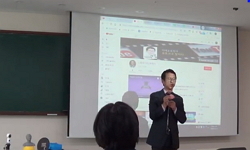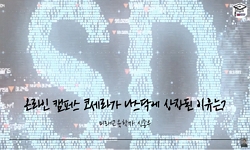University Campus in the city, especially in Seoul, maintains ambivalent tendency in its situation and the relationship with the surrounding context. The university campuses in Seoul are usually fenced up to distinguish themselves from the outside whi...
http://chineseinput.net/에서 pinyin(병음)방식으로 중국어를 변환할 수 있습니다.
변환된 중국어를 복사하여 사용하시면 됩니다.
- 中文 을 입력하시려면 zhongwen을 입력하시고 space를누르시면됩니다.
- 北京 을 입력하시려면 beijing을 입력하시고 space를 누르시면 됩니다.
대학 캠퍼스 주변지역 가로 공간 개선에 관한 연구 : 인하대학교 주변공간에 대한 공공영역 구축을 중심으로 = A Study on the Improvement of Street Space in the Vicinity of University Campus : Focused on the construction of Public Sphere in the neighboring area Inha University Campus
한글로보기https://www.riss.kr/link?id=T10928253
- 저자
-
발행사항
인천 : 인하대학교 대학원, 2007
-
학위논문사항
학위논문(석사) -- 인하대학교 대학원 , 건축공학과 계획 전공 , 2007. 2
-
발행연도
2007
-
작성언어
한국어
- 주제어
-
DDC
727 판사항(21)
-
발행국(도시)
인천
-
형태사항
viii, 95 p. ; 26cm
-
일반주기명
지도교수:구영민
- 소장기관
-
0
상세조회 -
0
다운로드
부가정보
다국어 초록 (Multilingual Abstract)
As the function and programs of today's university has become complex enough for the area of the campus to be far extended, it also becomes useless to have a clear distinction of the private and the public between the urban structure and the campus space. In addition, the university campus today is to be considered as non-confirming sphere that intermediates between the urban space and the local community. Accordingly, today's many universities do not verify the boundary between inside and outside of the campus, but instead, they open the camps toward the local community and the city to accommodate new roles and functions as a part of the city. Such endeavors are proved in the recent public projects such as the Improvement of streets around the campus area and an establishment of fine urban sight.
Accordingly, a so called campus town area is to be reconsidered to an extension of the campus space with its urban function. But, while the peculiarity of university campus space and the functions are disregarded, the most of the projects named with 'campus town' tend to place too much emphasis on the external appearance of the street; that is, an improvement of street image with signs, pavement, and lighting. Those projects usually result in vulgar decoration in the facade of the streets with heavy commercialization. The study, while avoiding any superficial and administrative approaches to an improvement of streets around the campus area and an establishment of fine urban sight, attempts to grasp the fundamental attribute in the moment when the extension of the campus meets the urban space, and to explore any possible methods by which both the campus and the surroundings act as an urban public sphere.
The main focus is placed on how to secure urban public sphere with respect to the structural relationship between the university campus and the local community. In addition, the study will mainly recognize the importance of spatial structure of the streets around the campus, which reflects the characters of the university both in space and in programs.
University Campus in the city, especially in Seoul, maintains ambivalent tendency in its situation and the relationship with the surrounding context. The university campuses in Seoul are usually fenced up to distinguish themselves from the outside while at the same time, they are defined as public realm of which huge void resides in the urban space.
As the function and programs of today's university has become complex enough for the area of the campus to be far extended, it also becomes useless to have a clear distinction of the private and the public between the urban structure and the campus space. In addition, the university campus today is to be considered as non-confirming sphere that intermediates between the urban space and the local community. Accordingly, today's many universities do not verify the boundary between inside and outside of the campus, but instead, they open the camps toward the local community and the city to accommodate new roles and functions as a part of the city. Such endeavors are proved in the recent public projects such as the Improvement of streets around the campus area and an establishment of fine urban sight.
Accordingly, a so called campus town area is to be reconsidered to an extension of the campus space with its urban function. But, while the peculiarity of university campus space and the functions are disregarded, the most of the projects named with 'campus town' tend to place too much emphasis on the external appearance of the street; that is, an improvement of street image with signs, pavement, and lighting. Those projects usually result in vulgar decoration in the facade of the streets with heavy commercialization. The study, while avoiding any superficial and administrative approaches to an improvement of streets around the campus area and an establishment of fine urban sight, attempts to grasp the fundamental attribute in the moment when the extension of the campus meets the urban space, and to explore any possible methods by which both the campus and the surroundings act as an urban public sphere.
The main focus is placed on how to secure urban public sphere with respect to the structural relationship between the university campus and the local community. In addition, the study will mainly recognize the importance of spatial structure of the streets around the campus, which reflects the characters of the university both in space and in programs.
국문 초록 (Abstract)
최근 활발하게 진행되고 있는 국내의 대학주변 가로 정비 및 경관조성계획 등은 이러한 변화를 실증해 주는 것으로 이제 대학 주변지역도 캠퍼스 공간의 연장선으로서 그 도시적 기능이 재조명돼야하는 입장에 처하게 된 것이다. 그러나 최근 주요 도심형 캠퍼스를 중심으로 이루어지고 있는 소위 ‘캠퍼스타운’조성계획은 대학 캠퍼스 공간 및 기능의 특성을 고려하지 않은 채, ‘대학로’라는 추상적인 공간 이미지를 외관적으로 치장하는 ‘가로경관조성’이라는 행정적 조치로 마무리되는 실정이다. 즉, 역사ㆍ문화ㆍ심리적 측면을 간과한 채, 상업화된 거리 공간을 미화하는 정도의 작업으로 인식함으로써 사실상 거리 공간, 또는‘캠퍼스타운’이라는 도시 구조적 속성을 반영하지 못하고 있다는 것이다.
따라서 이 연구는 획일적인 도시계획 프로세스에 의거한 대학주변 가로경관 조성이라는 피상적 접근을 회피하고, 캠퍼스 공간의 확장이 도시공간과 접목하는 근본적인 속성을 파악하며, 이를 기저로 하여 캠퍼스와 주변공간이 도시의 공공영역으로 작동할 수 있는 방법적 접근을 시도하는데 그 목적을 두고 있다. 연구의 주안점으로서 대학 캠퍼스와 주변지역의 공간구조를 관련지어 물리적 경계확장에 의한 도시 공공영영의 확보 방안을 탐구하고, 경관으로서 뿐만 아니라 공간적으로 대학의 특성을 반영하는 거리 공간 구축에 대해 고찰해 볼 것이다.
이러한 연구는 새로운 사건이나 경험을 적층하는 도시ㆍ건축의 혼성적 공간을 제안하고, 단순한 보이드의 삽입을 통한 공공 공간 확보가 아니라 캠퍼스의 경험을 증폭하여 도시경험을 풍요롭게 할 수 있는 공간을 생산하는 미시적 관점의 도시디자인을 제안하는 계기를 마련해 줄 것이다.
대학 캠퍼스, 특히 서울과 같은 도심형 캠퍼스는 경계에 의해 외부 도시공간과 구분되는 사적영역이면서 동시에 도시에 위치한 거대한 보이드로서 공공적 성격을 띤 영역으로 정의되는 양...
대학 캠퍼스, 특히 서울과 같은 도심형 캠퍼스는 경계에 의해 외부 도시공간과 구분되는 사적영역이면서 동시에 도시에 위치한 거대한 보이드로서 공공적 성격을 띤 영역으로 정의되는 양가적 성격을 지닌다. 그러나 오늘날 대학의 기능과 프로그램이 복합화 됨에 따라 캠퍼스 공간이 확장되고, 도시구조와의 관계가 과거와 같이 사적, 공적 영역으로 나누어 생각할 수 없게 되었다. 더욱이 오늘날 행정적으로나 자발적으로 대학 캠퍼스 공간은 도시 공간과 지역사회를 연계하는 중개 영역으로서 간주되고 있으며, 이를 바탕으로 도시와의 경계를 확정하기 보다는 도시의 한 부분으로서의 프로그램을 유지하고, 지역사회로 개방된 대학으로서 그 역할과 기능을 수용하기 위한 노력을 기울이고 있는 실정이다.
최근 활발하게 진행되고 있는 국내의 대학주변 가로 정비 및 경관조성계획 등은 이러한 변화를 실증해 주는 것으로 이제 대학 주변지역도 캠퍼스 공간의 연장선으로서 그 도시적 기능이 재조명돼야하는 입장에 처하게 된 것이다. 그러나 최근 주요 도심형 캠퍼스를 중심으로 이루어지고 있는 소위 ‘캠퍼스타운’조성계획은 대학 캠퍼스 공간 및 기능의 특성을 고려하지 않은 채, ‘대학로’라는 추상적인 공간 이미지를 외관적으로 치장하는 ‘가로경관조성’이라는 행정적 조치로 마무리되는 실정이다. 즉, 역사ㆍ문화ㆍ심리적 측면을 간과한 채, 상업화된 거리 공간을 미화하는 정도의 작업으로 인식함으로써 사실상 거리 공간, 또는‘캠퍼스타운’이라는 도시 구조적 속성을 반영하지 못하고 있다는 것이다.
따라서 이 연구는 획일적인 도시계획 프로세스에 의거한 대학주변 가로경관 조성이라는 피상적 접근을 회피하고, 캠퍼스 공간의 확장이 도시공간과 접목하는 근본적인 속성을 파악하며, 이를 기저로 하여 캠퍼스와 주변공간이 도시의 공공영역으로 작동할 수 있는 방법적 접근을 시도하는데 그 목적을 두고 있다. 연구의 주안점으로서 대학 캠퍼스와 주변지역의 공간구조를 관련지어 물리적 경계확장에 의한 도시 공공영영의 확보 방안을 탐구하고, 경관으로서 뿐만 아니라 공간적으로 대학의 특성을 반영하는 거리 공간 구축에 대해 고찰해 볼 것이다.
이러한 연구는 새로운 사건이나 경험을 적층하는 도시ㆍ건축의 혼성적 공간을 제안하고, 단순한 보이드의 삽입을 통한 공공 공간 확보가 아니라 캠퍼스의 경험을 증폭하여 도시경험을 풍요롭게 할 수 있는 공간을 생산하는 미시적 관점의 도시디자인을 제안하는 계기를 마련해 줄 것이다.
목차 (Table of Contents)
- 1. 서론 = 1
- 1.1. 연구의 배경 및 목적 = 1
- 1.2. 연구의 방법 및 범위 = 2
- 1.3. 연구 흐름도 = 4
- 2. 현대도시에서 대학과 캠퍼스 주변지역에 대한 논의 = 5
- 1. 서론 = 1
- 1.1. 연구의 배경 및 목적 = 1
- 1.2. 연구의 방법 및 범위 = 2
- 1.3. 연구 흐름도 = 4
- 2. 현대도시에서 대학과 캠퍼스 주변지역에 대한 논의 = 5
- 2.1. 대학 캠퍼스의 도시적 특성 = 5
- 2.1.1. 대학 캠퍼스의 공간적 구성과 형태 = 7
- 2.1.2. 거대도시시설로서의 대학 캠퍼스 = 11
- 2.2. 대학캠퍼스와 주변영역과의 새로운 관계 구조 = 13
- 2.2.1. 대학의 물리적 경계 확장과 도시적 통합 = 14
- 2.2.2. 대학 프로그램의 도시적 연계 = 18
- 2.3. 도시경관으로의 캠퍼스타운 조성 = 25
- 2.3.1. 대학 가로 기능과 정비의 필요성 대두 = 25
- 2.3.2. 캠퍼스타운 경관조성 사례연구에 대한 분석 및 비판 = 27
- 2.3.3. 도시경관의 재해석, 이론적 고찰 = 32
- 3. 대학 및 캠퍼스 주변에서 발견되는 공공영역의 구현 = 37
- 3.1. 도시 공공영역의 수용 = 37
- 3.2. 가로, 건축, 도시의 공간적 성찰 = 42
- 3.3. 대학과 캠퍼스타운의 공공영역 구축 = 44
- 3.3.1. 공공영역의 의미와 속성 = 44
- 3.3.2. 공공영역 구축 방식 = 45
- 3.3.3. 도시 내에서 대학이 창출하는 공공영역 = 47
- 4. 인하대학교의 주변가로 정비와 캠퍼스타운 구축에 대한 종합분석 = 55
- 4.1. 인하대학교 및 주변지역에 대한 역사적 고찰 = 55
- 4.1.1. 인천의 역사와 도시구조의 변화 = 55
- 4.1.2. 인하대학교와 인천의 지역 관계 = 57
- 4.2. 인하대학교 캠퍼스와 주변지역의 관계성 = 58
- 4.2.1. 캠퍼스 현황 = 58
- 4.2.2. 후문지역의 캠퍼스타운 대로 및 주변 현황 = 62
- 4.2.3. 지역 공동체로서의 ‘캠퍼스타운’ 구축 = 64
- 4.2.4. 캠퍼스타운의 캠퍼스화와 공공영역의 구축 = 64
- 4.3. 인하대학교 캠퍼스타운의 프로그램 재해석 = 65
- 4.3.1. 프로그램의 복합성과 경험의 증폭 = 65
- 4.3.2. 캠퍼스타운의 캠퍼스화 / 공공영역 = 69
- 4.4. 경험적 공간의 재생산을 위한 디자인 전략 = 71
- 4.4.1. Urban decalcomanie = 71
- 4.4.2. 통로로서의 도시·건축 공간(Passage-Architecture-Urbanism) = 71
- 4.4.3. 내부화된 도시·건축(Interior-Urban-Architecture) = 72
- 4.4.4. 내러티브화된 공간 패턴(Narrative-Space-Pattern) = 72
- 5. 디자인 실험 = 74
- 5.1. 디자인 실험 Ⅰ_ X축과 Y 축의 활성화 계획 = 74
- 5.2. 디자인 실험 Ⅱ_ Figure & Ground 에 의한 Re-programming = 83
- 6. 결론 = 91
- 참고 문헌 = 93












